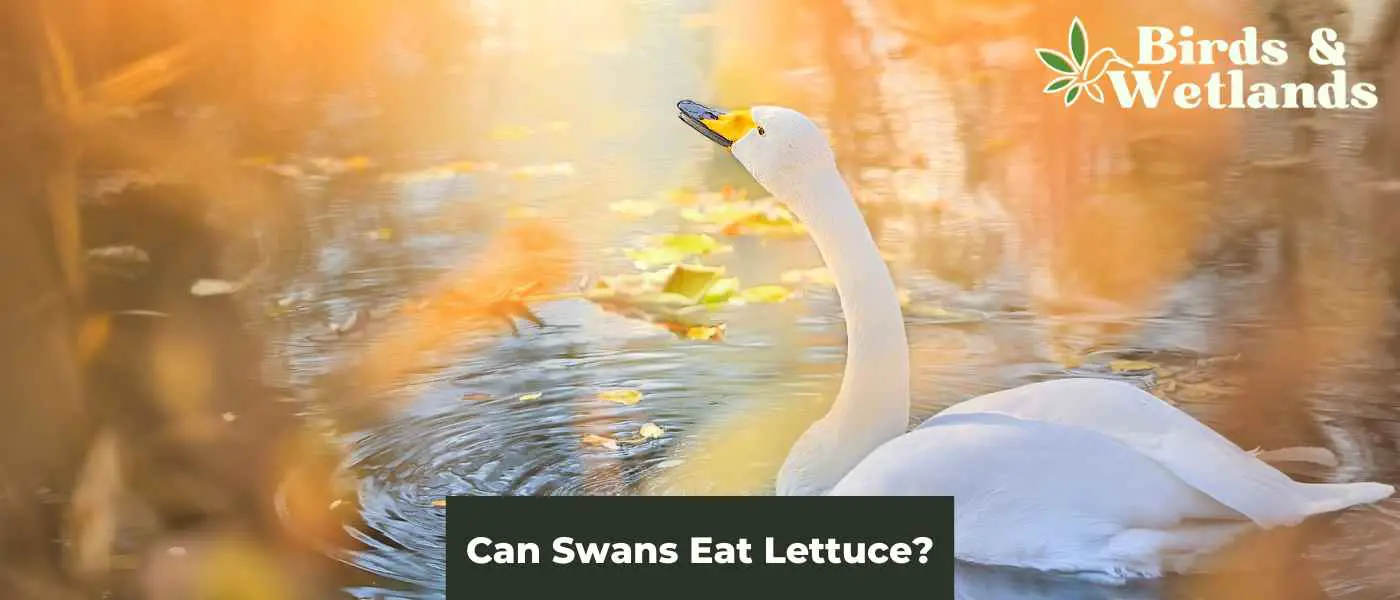Swans are beautiful and graceful birds that are often found in ponds and lakes, where people love to feed them. While their primary diet consists of aquatic vegetation, many people also offer them human food as a treat.
Lettuce, in particular, is a popular snack that people often offer to swans.
But can swans safely consume lettuce? Let’s find out.
Yes, swans can safely eat lettuce, particularly dark, leafy varieties like romaine, green leaf, or red leaf. It is essential to wash the lettuce, tear it into bite-sized pieces, and offer it in moderation. Supplementing their diet with other natural foods and providing clean water will promote swans’ overall health.
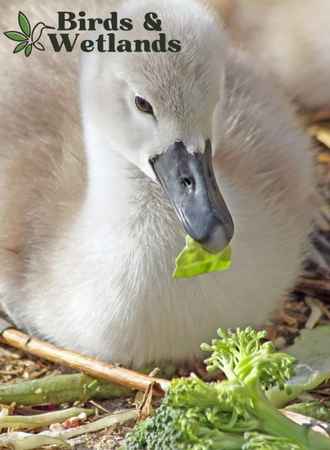
Key Takeaways on Feeding Young and Adult Swans Lettuce
- Choose the right type: Opt for dark, leafy greens like romaine, green leaf, or red leaf lettuce, as these varieties contain more nutrients than iceberg lettuce.
- Wash thoroughly: Make sure to wash the lettuce thoroughly before feeding it to swans to remove any dirt, pesticides, or contaminants.
- Tear into smaller pieces: Break or tear the lettuce into smaller, bite-sized pieces to make it easier for the swans to eat.
- Portion control: As with any food, it is important not to overfeed swans. Offer a moderate amount of lettuce along with other natural foods like oats to ensure a balanced diet.
- Avoid additives: When feeding lettuce to swans, avoid using any dressings or additives, as these can be harmful to their health.
Is lettuce healthy for swans?
Swans can benefit from eating lettuce as it provides them with hydration and some vitamins and minerals. Lettuce is mostly water, which can help swans since they live in aquatic environments.
Lettuce also contains small amounts of vitamins A, C, and K and minerals like iron, calcium and potassium. However, lettuce should not be the primary part of a swan’s diet as it lacks some essential nutrients that swans need.
Swans are primarily herbivores and eat about 20% to 25% of their body weight in food. So while leafy vegetables are nutritioun for them, it is an acquired taste for most swans.

Can baby swans eat lettuce?
While baby swans, also called cygnets, can consume lettuce and other leafy greens, it is crucial to keep in mind that this should only be done in moderation.
Leafy greens, such as lettuce, do not provide the necessary nutrients for a young swan’s growing body and should only be used to complement their regular diet of waterfowl starter feed.
Consuming too much lettuce can lead to health problems, such as vitamin deficiencies or malnutrition, if not monitored.
It is essential to remember that baby swans are still learning to eat properly and may not have the necessary skills to digest some parts of lettuce and other leafy greens.
Even though waterfowl starter feed provides all the essential vitamins, minerals, protein, and carbohydrates that a baby swan needs for healthy growth, small amounts of greens like lettuce can add variety to their diet. For instance, swans like iceberg lettuce due to its mild taste and texture.
When offering a baby swan lettuce or any other leafy green treat, ensure it is thoroughly washed with clean water to remove any chemical residues from pesticides or fertilizers.
If unable to wash it yourself, leave it in the sun for at least 15 minutes before giving it to your baby swan as it will help eliminate any harmful bacteria on the leaves.
Additionally, never offer uncooked leafy greens such as spinach or kale, as they are more challenging to digest and can cause digestive issues in baby swans.
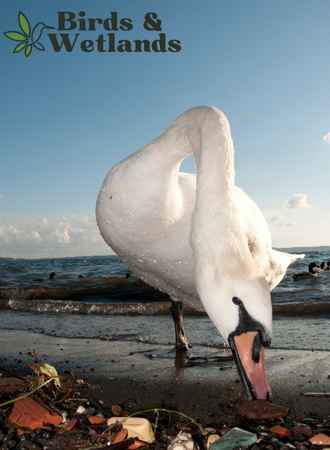
How often can swans eat chopped lettuce?
Feeding swans with chopped lettuce regularly is not recommended as it is not a natural or ideal part of their diet. Lettuce is nutritious and can be a healthy snack for these birds. You can feed swans lettuce once to twice a week.
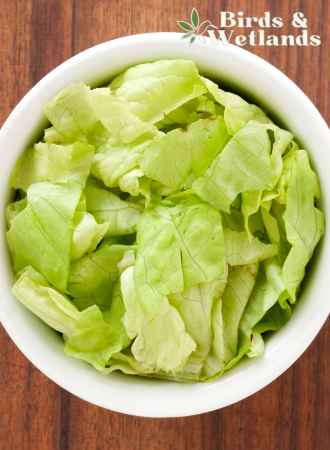
How to serve lettuce to swans?
If you want to serve lettuce as a treat, it should be done in small quantities rather than as a regular part of their diet.
If you want to feed the swans, the lettuce should be washed and chopped into small pieces, making it easy for the swans to consume. It can be served on the water surface or the shore, but it is important to avoid overfeeding them as it can lead to health problems.
You can also mix lettuce with other vegetables and grains such as green peas, dried corn and shredded carrots.
Additionally, it is important to note that feeding wild animals, including swans, can lead to dependency on human-provided food, which can negatively impact their health and well-being and disrupt the natural ecosystem.
However, supplementation can provide them with a reliable energy source during the cold winter months.
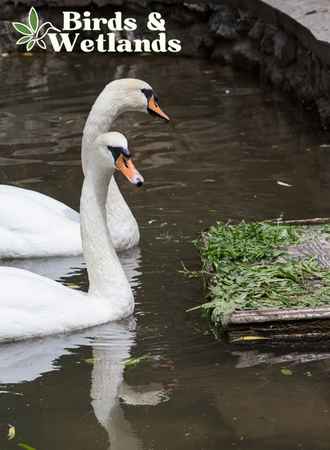
Related Questions on What Swans Eat
Do swans eat fish?
Most swans spend time on land and in the water. So naturally, they dip their long necks into the water and eat small fish, such as minnows along with aquatic insects and amphibians. However, their diet may vary depending on the species and the location they are found in. They also drink freshwater.
It is also worth noting that mature swans eat less animal matter but more vegetable matter. This means feeding fish is not ideal.
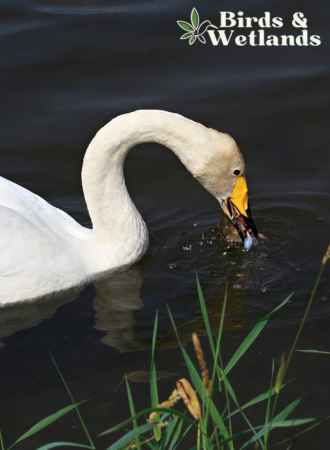
Do swans eat bread and salty foods?
Swans can eat bread but not salty foods. Both of these foods are not part of the swan’s natural diet and may interfere with normal nutrition. Bread has little nutritional value but is high in carbohydrates and lacks the necessary nutrients that swans need to maintain their health.
Feeding bread to swans can also cause health problems such as obesity and malnutrition. Eating bread has also been linked to the development of angel wing, a condition which the wings grow incorrectly. This defect can lead to bullying from other swans. Too much bread can also affect the ability of the swan to produce offspring.
When people feed bread to swans, it harm the local ecosystem by disrupting the balance of the aquatic environment. Swans can find their own food even in freezing weather.
It is advised not to feed fresh bread, sugary foods and other processed human foods to swans. It is better to give the mute swan family at your local park food specifically formulated for waterfowl, such swan food pellets.
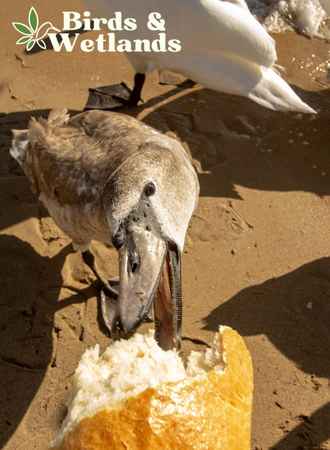
Do swans eat fruit?
Swans will eat fruit, but it is not a common part of their diet. Their diet primarily comprises aquatic plants, small fish, frogs and other aquatic organisms.
However, some species of swans, such as the mute swans, have been observed to eat fruits like berries, grapes, and apples (with apple seeds removed) as supplementary food sources in some regions where it is available. But in general, swans are not considered to be fruit eaters.
Do swans eat nuts?
Swans are unlikely to eat nuts as they are not a natural food for them. Nuts are not a common food source for swans, and they would be unable to crack open the hard shells to access the nut inside. It is best not to feed swans nuts as it may cause harm to their digestive system.
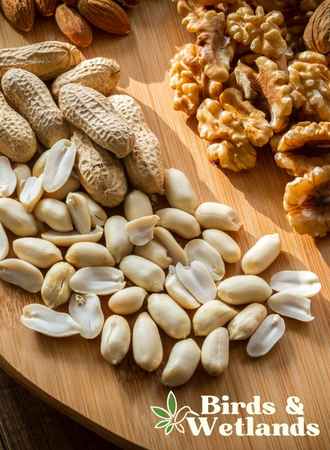
Do swans eat ducklings?
Swans are known for their beauty and grace but can also be territorial and protective. They have been known to attack ducks, such as mallards and ducklings, when they enter their territory. Although it has been speculated that this behavior is due to swans eating ducklings, it is more likely due to territorial disputes.
Fortunately, there have been no confirmed reports of swans eating other birds’ young. Through careful monitoring and protection efforts, we can ensure the safety of ducklings and adult ducks from conflicts with swans.
Do swans eat insects?
Swans are among the largest flying birds and their diet includes insects. In fact, their favorite foods include a variety of aquatic insects, such as dragonflies, damselflies, and water beetles. Insects provide a source of protein and other essential nutrients that swans need to maintain their health.
Additionally, some species of swans may consume terrestrial insects such as grasshoppers, beetles and caterpillars but small animals consist only a small portion of their diet.
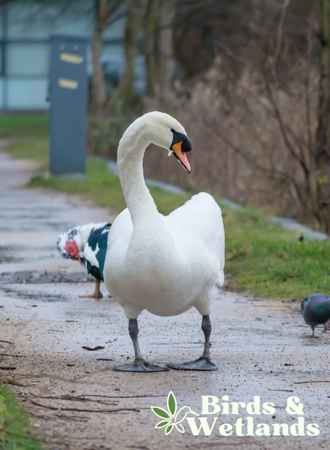
Can baby swans search for their own food?
Young swans, also known as cygnets, are precocial, meaning they are born with a high level of development and can move around and take care of themselves shortly after hatching. On the other hand, altricial birds are born with very little development and require much care and feeding from their parents.
Fluffy cygnets can go without food 5 to 10 days becuase they absorb the last of the egg yolk prior to hatching.
As they grow, the female swan will help cygnets find food by leading them to areas where they can find aquatic plants. In some instances, both parents help their young by food-trampling or pulling up plants from the bottom of the shallow water.
Other Food Swans Eat
Best Waterfowl Feed
Delightful Feeding Experience
Transform your backyard into a scenic waterfowl habitat and enjoy an interactive feeding experience with Natural Waterscapes Waterfowl Floating Food.

Pros
- Nutritious Food: Natural Waterscapes Waterfowl Floating Food is specifically designed to provide essential nutrients to waterfowl, including swans, geese, and ducks, helping them maintain a healthy diet.
- Convenient: The food comes in resealable packaging, making it easy to store and use as needed. It is also easy to handle and transport.
- Floating Formula: The floating formula of the food allows it to remain on the surface of the water, making it easier for waterfowl to eat and minimizing the risk of water contamination.
- Attracts Waterfowl: The food is formulated to attract various waterfowl species, including swans, geese, and ducks, to your pond, lake, or other water body, providing an opportunity to observe and enjoy these beautiful creatures.
- Environmentally Friendly: Natural Waterscapes Waterfowl Floating Food is made with environmentally friendly ingredients and does not contain any harmful preservatives, making it safe for both waterfowl and the environment.
Cons
- Shelf Life: The food’s shelf life may be limited compared to other types of waterfowl food due to its natural ingredients and lack of preservatives. This means you may need to use it up quickly after opening the package to prevent it from going bad.

